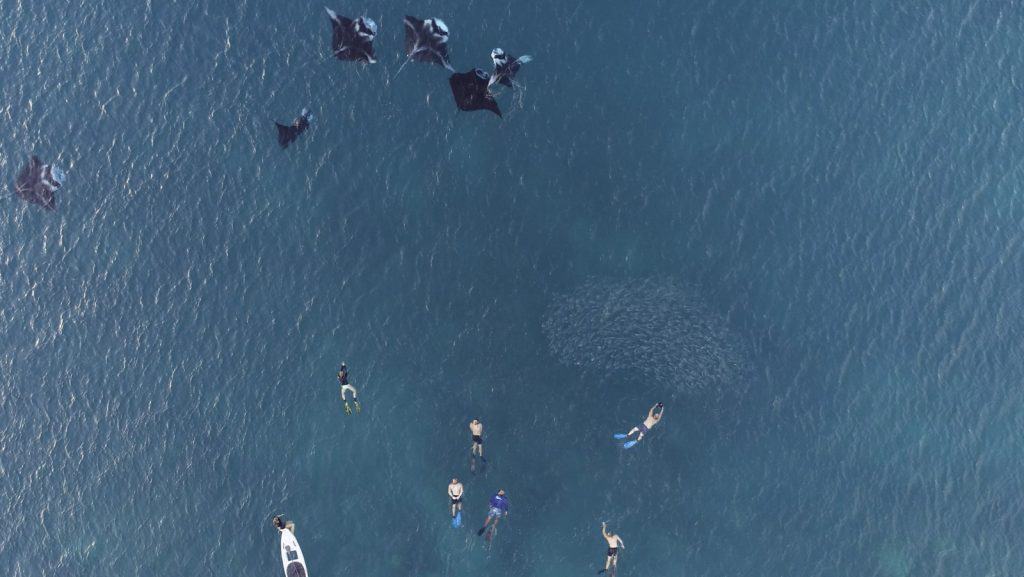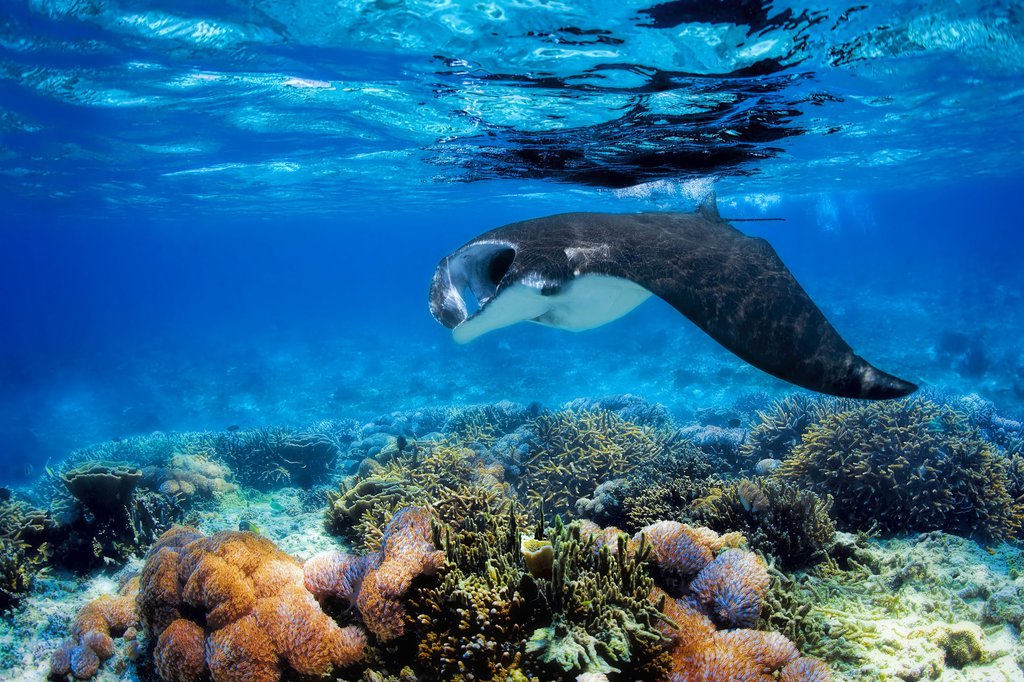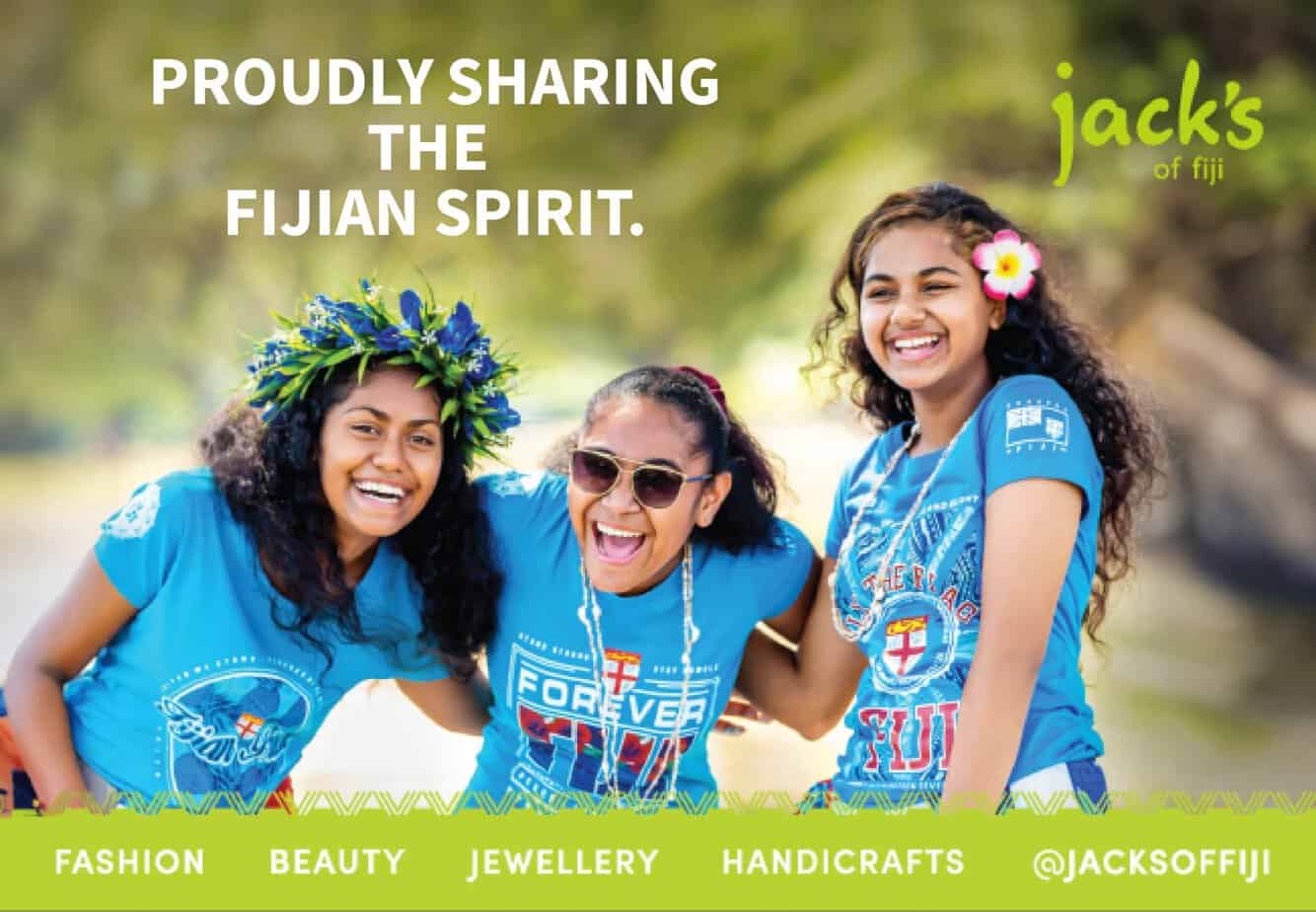By Anirban Mahapatra
After almost an hour of navigating through lagoons flanking the southern coastline of Kadavu island, the dive boat finally reaches a rocky channel that provides a way out of the submerged mountain walls of the Great Astrolabe Reef. As it cautiously steers around barnacled boulders strong enough to breach battleships, the colour of the water below the boat changes gradually from ultramarine to sapphire, before suddenly losing its luminescence to turn a sombre shade of deep blue. For anyone who has been out on boats long enough to read the colour of water, it’s an indication of venturing past the safety of the shallows into the bottomless void of the great marine unknown.
There is no buoy or mooring line marking the dive site here. To the untrained eye, this place could just be another patch of sea anywhere along the reef. But for skippers navigating the local waters, there’s an intangible set of coordinates that mark the spot where the magic happens. Someone, sometime in the past, casually referred to it as Manta Point, and the name stuck.
The day is rather balmy for the time of year, neither too warm, nor too cold. A southwesterly wind has suddenly picked up to ruffle the stillness of the water with gentle waves, and the tide is beginning to turn. For divers out to spot megafauna in these remote waters, the conditions are apparently a rare yet favourable alignment of nature’s unpredictable vagaries. “I have a strong feeling you will find what you came for,” says my dive guide, peering over the keel to inspect the water with his experienced gaze. “We have not had conditions like these in over a month. Maybe it’s your lucky day after all, eh?” he chuckles.
I certainly hope so, I tell myself quietly, as I assemble my dive kit and go through my pre-dive checklist. I have waited a very long time for this encounter. Through my years of roaming the oceans, I have encountered numerous fantastic beasts at close range — sharks, seals, dolphins, turtles, even the odd humpback whale. But never a manta ray. In my search for the winged dweller of the deep, all I have come across so far are other people’s accounts of crossing paths with the creature; engrossing tales told with rapturous gusto that have only ratcheted my desire to meet a manta ray in its wild habitat.
But even on a favourable day like today, I know that the actual odds of me sighting a manta remains ever so slight. “There are two kinds of divers on earth,” a veteran scuba professional once told me while sipping tea in between dives. “Those that have met a manta, and those that will die searching for one.” So with all of my guide’s optimism stacked on the one hand, and the stoic acceptance of a likely fruitless dive balanced on the other, we run through our buddy check and leap off the stern of the boat, before quickly descending along the reef walls in search of what may well be the most elusive creature roaming the planet’s oceans.
The reefs of Fiji are home to some of the most compelling underwater sceneries ever known to humans. An oft-recurring element is the ‘bottomless wall’; shoulders of steep undersea mountains that fringe the coast and form extensive barrier reef systems around the islands. Carpeted with exuberant coral colonies, interspersed with hillocks that carve shallow habitats into the precipices, and nourished by strong ocean currents promising rich plankton supplies, the reefs boast thriving ecosystems that are visited by pelagic animals in search of food, shelter and a spot of salon time in cleaning stations.
This has unsurprisingly resulted in a few hotspots across the islands that promise awesome encounters with oceanic creatures — including the manta ray. Over the years, Drawaqa island in the Yasawas has become legendary among travellers for the matchless thrill of being able to snorkel with manta rays. Buliya island, in the far east of the Kadavu group, has also gained reputation as a manta sanctuary, while mangrove-lined Laucala Bay — hemming the southeastern coast of Viti Levu island — has recently been identified as a haven for giant oceanic manta rays, with sightings often reported by kayakers on day outings.

But Manta Point is a slightly different ball game. The terrain here is savage, moody, unpredictable. Nothing is guaranteed, nothing goes to script, nothing is cast in stone. So dropping gradually down to about 18 metres, we slowly push our way into a moderately strong current, with no firm thoughts in mind other than our basic dive plan of venturing along the reef wall for 25 minutes, before turning around and heading back to the boat. To our right, as we fin our way forward, the reef wall sparkles with vibrant heaps of hard coral, with playful reef sharks darting through staghorn-draped bommies and giant crayfish nesting in rock crevices. To our left, and below us, the eerie void of the ocean descends into a sunless abyss. The water is mucky with plankton, but visibility is surprisingly over 15 metres (mediocre by Fijian standards but exceptional in many other oceans of the world). All in all, it’s a regular day in the water at best not unenjoyable, but nowhere close to what I really came here for.
Snorkelling with Mantas
You don’t necessarily have to dive in order to meet manta rays. Every year, between May and September, numerous mantas from deeper waters migrate to the narrow channel called Drawaqa Passage, north of Drawaqa island in the Yasawas. The channel is quite shallow (about four metres at its deepest), and a moderate current means that snorkelling can only be done with the drift (i.e., the boat will drop you at one end of the channel, and then pick you up at the other end). Drawaqa is easily the most likely place to cross paths with a manta ray. Of course, the experience is not quite as primal as in Kadavu or further out in remoter waters, but sightings in the channel occur almost daily through the southern winter. If you are particularly lucky, you could be in the water at the same time as half-a-dozen mantas swimming around. However, given how up-and-close these encounters could be, do remember to keep a respectable distance between you and the creatures. Barefoot Manta Island Resort is the best place to camp on Drawaqa island for a date with the mantas. It’s located right next to the channel and has a collection of simple bures and dorm beds (both with compulsory meal plans) for you to choose from. You could also stay at Mantaray Island Resort located on nearby Nanuya Balavu island.
The scheduled 25 minutes are soon over. Our air supplies are still looking good, so we ponder over whether or not to rise to 12 metres and advance for another 10 minutes, just in case we luck out. In my mind, however, the reality of not having seen a manta ray on yet another dive has already begun to settle in. I agree, almost half-heartedly, to the extended push, not really caring about the end result.
And then it happens.
A dark silhouette, almost of alien proportions, slowly rises from the chasm below us, its kite-shaped profile becoming clearer as it gracefully approaches us from the distance. We divert from our own course and inch closer to its glide path, all the while respecting the distance that must be kept between humans and wildlife. Some 10 metres away, the manta ray comes into our clear view for the first time. It’s huge, about 3.5 metres from one wingtip to the other, its feeding lobes coiled like a funnel in front, its tail stretched behind like the dazzling trail of a prophetic comet blazing through the night sky.
I quickly fire up my camera and turn on my dive lights to add some illumination for the purpose of filming a quick video. Like a sentient creature reacting to an unfamiliar stimulus, I notice the manta ray veer from its own path and come towards me, as if to take a closer look. As it slowly glides past, less than three metres overhead, its giant wings sweep out to briefly block out the sun from above me. With my camera rolling away, I follow the creature for some time, mesmerised by its elegance and poise as it effortlessly glides through the water.
Then, having obliged me with my long-awaited sighting, the creature suddenly picks up speed and disappears into the darkness once again. The entire episode feels like a lifetime, but my watch tells me it was no longer than two minutes.
We promptly turn the dive around, and head back towards the boat after completing a safety stop en route. I pop my head out of the water, still reeling from all the adrenaline rushing through my veins, a beatific smile pasted semi-permanently on my face. “Congratulations,” the boatman yells at me from the deck, needing no more evidence to guess I had finally broken my manta jinx. “Thanks,” I yell back mechanically, lost for any more words amidst all the excitement.
Deeper in my mind, the experience leaves me with the indelible impression of one of the ocean’s most sublime encounters. Powerful and poignant, its vision still pleasantly haunts me in my sleep, and has me in its irresistible grasp even to this day. I have seen many manta rays in Fijian waters since, but nothing beats the sheer thrill of the very first time.
For those of you who are yet to come under the witching spell of this beautiful animal, I highly recommend you try it, whether on a dive or a snorkel safari. After all, there’s no place in the world better than Fijian waters to do so. And who knows, your story might just be more amazing than mine.
Reef vs Oceanic Mantas
The mantas that roam Fiji’s oceans are of two types. Reef mantas, the smaller of the two cousins, usually grow up to four metres between wingtips, and inhabit shallower waters fringing coastal areas. Oceanic mantas, on the other hand, can acquire a wingspan of up to seven metres, and are more pelagic in nature. They mostly navigate open waters, but occasionally also venture closer to shore in search of food and visits to cleaning stations, where resident parasitic species pick away all the filth and grime the animals gather during their time out at sea. Apart from their size, the two types of manta rays can be told apart by the markings they carry on their dark dorsal (top) sides. Reef mantas have two light grey strokes dominating the area on top of its head, forming a ‘Y’ shape between them. In oceanic mantas, the strokes are brighter and more contrasted to their skin colour, and the shape formed between them is more of a ‘T’. Interestingly, the ventral (bottom) side of manta rays carry have spotted markings that are unique to each creature, much like fingerprints. If you happen to snap a picture of a manta clearly showing its belly, you might want to forward it to the folks at Manta Trust, who could then use your image to identify and monitor the movement of manta rays in Fijian waters. The best part: if you manage to click a previously undocumented animal, you even get to name it!
This article first appeared in Fiji Traveller, July-September 2023.
Tourism Fiji’s tips for swimming with mantas



